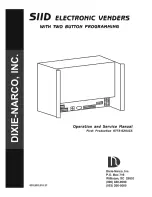
2.3.3. Parallel Memory Transmission *
Using memory transmission, normally the machine starts dialing after the
document has been completely scanned. Using Parallel Memory Transmis-
sion, the machine starts dialing at the same time the machine starts
scanning. If the document has multiple pages, the machine scans them into
memory and sends them at the same time.
The following table shows the differences between normal memory transmis-
sion and parallel memory transmission.
Memory tx
Parallel memory tx
File Reserve Report
Printed, if automatic report
printout is enabled.
Not printed.
If the other terminal is busy
Tries to resend the
message later.
Continues scanning the
document into memory, and
tries to resend it later.
If transmission failed
Tries to resend the
remaining pages later.
Tries to resend the
remaining pages later.
If memory overflows during
scanning
Stops scanning and erases
all the scanned pages from
memory, if the user agrees
to erase them.
Stops scanning and hangs
up the communication when
memory overflow is
detected. Then erases all
the scanned pages from
memory without notice.
If a document jam occurred
during scanning
Stops scanning and deletes
all the scanned pages from
memory.
Stops scanning and hangs
up the communication when
a document jam is detected.
How and when the scanned
message is erased from
memory
The complete message is
erased after all the pages
have been sent.
Each page is erased after
the page has been
successfully sent.
Memory threshold to start
scanning into memory
Depends on the setting of
communication switch 0D.
Default setting - 24kB
Depends on the setting of
system switch 10.
Default setting - 512 kB
Meaning of the stamp mark
Successfully scanned.
Successfully scanned.
Batch numbering (P. x/x)
Enabled
Not available unless the
number of pages is
programmed manually.
Detai
led De-
scr
ip
ti
ons
December 21st, 1995
DETAILED SECTION DESCRIPTIONS
SYSTEM FEATURES
2-61
















































